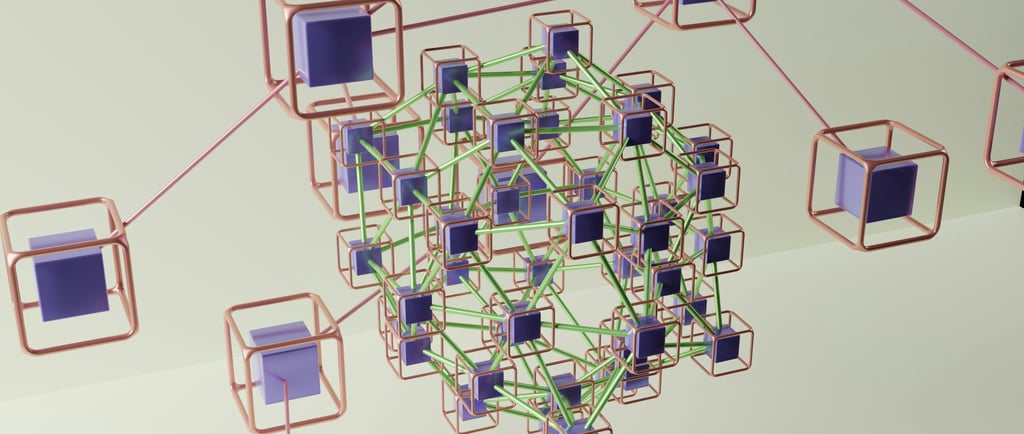Leveraging AI and SDN for Smarter, Scalable Network Solutions
AI and SDN combine to create intelligent, scalable networks. AI enhances SDN by enabling dynamic traffic management, automated optimization, and predictive analytics. This integration improves efficiency, scalability, and security, while reducing operational complexity, empowering modern networks to adapt, optimize, and deliver enhanced performance for evolving digital environments.
5/12/20243 min read


Introduction to AI in Computer Networks and the Effect of SDN
Artificial Intelligence (AI) is transforming nearly every industry, and computer networking is no exception. With the increasing complexity of network systems and the need for better management, AI is being used to optimize and improve the way computer networks function. Additionally, the rise of Software-Defined Networking (SDN) has played a significant role in making AI integration into networks more effective. In this blog, we will explore the basics of AI in computer networks and how SDN enhances its use.
What is AI in Computer Networks?
AI in computer networks refers to the application of intelligent algorithms and machine learning techniques to automate tasks, improve decision-making, and optimize network operations. In traditional networks, most decisions are made by human network administrators, which can be slow and prone to errors. AI, however, allows networks to adapt, learn, and make real-time decisions without human intervention.
Some key areas where AI is used in computer networks include:
Network Management: AI can automatically detect and resolve issues like congestion, failures, or security breaches in real-time, improving network reliability.
Traffic Optimization: AI algorithms can analyse traffic patterns and intelligently route data to avoid bottlenecks ensuring faster and smoother communication.
Security: AI can be used to detect unusual behaviour on the network, like potential cyber-attacks, and take immediate action to mitigate risks.
Predictive Maintenance: Using AI to predict potential network failures or performance degradation before they happen, allowing for proactive maintenance.
What is SDN (Software-Defined Networking)?
Software-Defined Networking (SDN) is an innovative approach to designing and managing computer networks. Traditionally, networking devices like routers and switches made decisions about how data should flow across the network. With SDN, the control plane (the part that decides how data should be routed) is separated from the data plane (the part that actually sends the data). This separation allows for greater flexibility and centralized control of the network.
SDN provides network administrators with a centralized platform to manage and control the entire network through software, making it easier to configure, manage, and monitor network devices. This centralized control is key to implementing AI in networks because it allows AI algorithms to have more access and control over the network, leading to better optimization and decision-making.
How SDN and AI Work Together in Computer Networks
The combination of SDN and AI is a powerful one. Let’s take a look at how they complement each other:
Centralized Control with AI: SDN’s centralized approach allows AI algorithms to have access to the entire network’s data, which makes it easier for AI to analyse and make decisions. For example, an AI system can analyse network traffic from across the whole network and adjust traffic routing in real-time to avoid congestion or to improve performance.
Dynamic Adaptation: SDN allows the network to be reconfigured in real-time through software. This makes it easier to implement AI systems that can adapt to changes in the network’s behaviour. For example, if a new application is added to the network and it causes a spike in traffic, the AI system can adjust the network dynamically to handle the increased load.
Automated Decision Making: Traditionally, network administrators had to make many decisions manually, such as configuring devices or handling failures. AI, combined with SDN, automates these tasks. For example, if a failure is detected, the AI can reroute traffic without any human intervention. This reduces the likelihood of human error and improves the overall efficiency of the network.
Improved Network Security: SDN’s centralized control allows AI to monitor the entire network for unusual behaviour. If an anomaly is detected (like a possible security breach), the AI can immediately take action, such as blocking malicious traffic or reconfiguring the network to isolate the problem. This level of real-time response is much more effective than traditional security measures.
Predictive Networking: With AI and SDN, networks can become predictive, meaning they can anticipate issues before they happen. AI can predict when a network device is likely to fail based on historical data, and SDN can reconfigure the network to make up for that failure, preventing downtime.
The Future of AI in Networking
The integration of AI into computer networks, along with the use of SDN, is just the beginning. As AI algorithms improve and SDN becomes more widespread, we can expect networks to become even more intelligent and automated. In the future, AI could fully manage networks, anticipating problems, optimizing traffic, ensuring security, and even self-healing in case of failures.
With AI, networks will become more efficient, adaptive, and secure, helping businesses and organizations keep up with the increasing demands of modern digital environments.
Conclusion
AI is bringing a new level of automation and intelligence to computer networks. It helps in managing traffic, improving security, and reducing the need for human intervention in network operations. When combined with Software-Defined Networking (SDN), AI becomes even more powerful, offering centralized control and real-time adaptability. As we move forward, the combination of AI and SDN will continue to evolve, making networks smarter, faster, and more reliable.
In the end, AI and SDN are shaping the future of computer networking, and we can expect exciting innovations that will redefine how we connect and communicate digitally.
